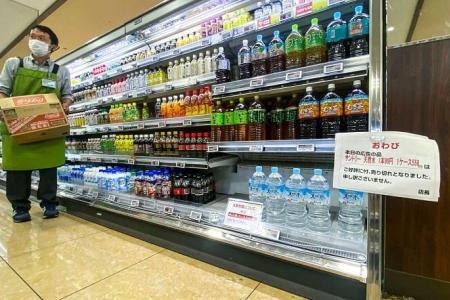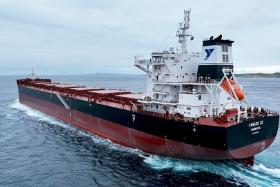Japan ends Nankai Trough mega quake alert
TOKYO – Japan lifted on Aug 15 a warning that a “mega quake” potentially causing colossal damage and loss of life could strike, with the government telling people to “go back to normal”.
The week-old alert that such a catastrophe might hit the archipelago of 125 million people prompted thousands to cancel holidays and stock up on essentials, emptying shelves in some stores.
“The people of Japan are free to go back to normal lifestyles,” Disaster Management Minister Yoshifumi Matsumura said as he announced the lifting of the advisory at 5pm (4pm in Singapore).
However, he said people should not forget measures such as securing furniture, ensuring family members know the location of evacuation shelters and stockpiling emergency foods.
“The special call for attention ended, but it doesn’t mean the risk of a major earthquake has been eliminated,” Mr Matsumura told reporters.
“We ask (people) to continue to be mindful of these daily precautions and remain vigilant for a megaquake that can happen anytime, anywhere,” he said.
A Japan Meteorological Agency (JMA) expert panel on Aug 8 released an advisory that there was a “relatively higher chance” of a Nankai Trough mega quake as powerful as 9 magnitude, after a 7.1-magnitude quake hit Japan’s south-west.
That was a particular kind of tremor known as a subduction megathrust quake, which has occurred in pairs in the past and can unleash massive tsunamis.
The 800km Nankai Trough is an undersea gully that runs parallel to Japan’s Pacific coast, including off the Tokyo region, the world’s biggest urban area and home to around 40 million people.
All segments of the Nankai Trough ruptured at once in 1707, unleashing an earthquake that remains the nation’s second-most powerful on record.
That quake, which also triggered the last eruption of Mount Fuji, was followed by two powerful Nankai megathrusts in 1854, and one each in 1944 and 1946.
While the advisory was not a definitive prediction, the government asked residents of a wide range of western and central regions to review evacuation procedures in case of severe earthquake and tsunami disasters.
Supermarkets put limits on purchases, including bottled water, and as demand soared online for emergency items such as portable toilets and preserved food.
Prime Minister Fumio Kishida cancelled a diplomatic tour to Central Asia and Mongolia over the weekend to prioritise disaster management.
On Aug 9, a 5.3-magnitude earthquake hit eastern Japan near Tokyo, but its epicentre was located outside of the Nankai Trough zone where the JMA signalled the chance of a mega quake, and the damage was small as only three mild injuries were reported.
Central Japan Railway ended its week-long precaution of reducing the speed of trains running near coastal areas, although the risk of another natural disaster, approaching Typhoon Ampil, forced the company to cancel high-speed trains connecting Tokyo and Nagoya on Aug 16.
Japan has predicted a 70 to 80 per cent chance of a Nankai Trough mega quake occurring in the next 30 years.
The government’s worst-case scenario has estimated that a Nankai Trough mega quake and subsequent tsunami disaster could kill 323,000 people, destroy 2.38 million buildings and cause 220 trillion yen (S$2 trillion) of economic damage.
Japan is one of the world’s most earthquake-prone countries.
More than 15,000 people were killed in a 9-magnitude quake in 2011 that triggered a devastating tsunami and the triple reactor meltdowns at a nuclear power plant in northeast Japan. – AFP, REUTERS
Get The New Paper on your phone with the free TNP app. Download from the Apple App Store or Google Play Store now


